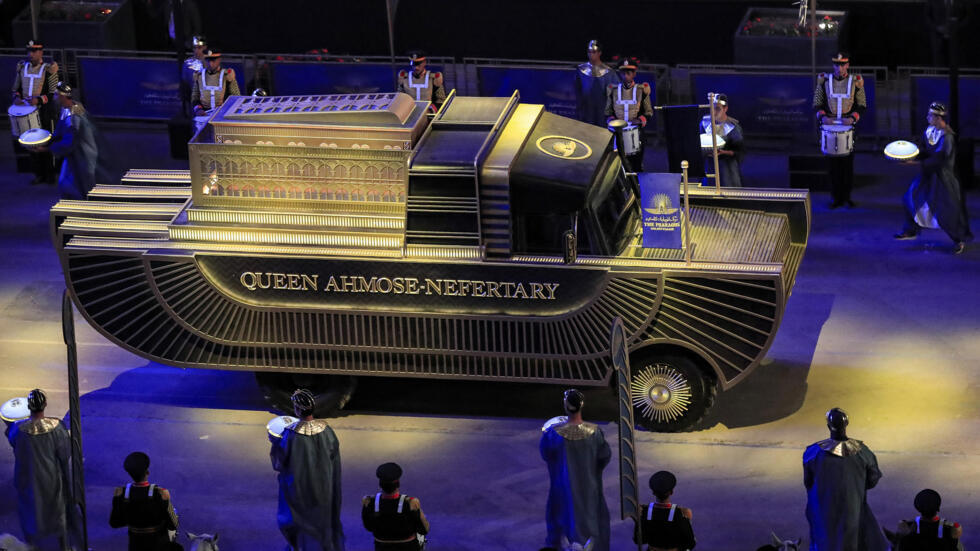Egypt puts on extravagant parade to welcome Pharaohs to new resting place
A procession of floats carrying the mummified remains of 22 pharaohs, including Egypt's most powerful ancient queen, crossed Cairo on Saturday evening in an eye-catching parade to their new resting place at the National Museum of Egyptian Civilisation. The mummies will go on display to the general public from 18 April.
Issued on:

Under heavy security, the mummies travelled seven kilometres (four miles) across Egypt's capital to the new National Museum of Egyptian Civilisation.
In what was dubbed the "Pharaohs' Golden Parade", the 18 kings and four queens travelled in order, oldest first, each aboard a separate float decorated in ancient Egyptian style.
In total, 60 motorcycles, 150 horses, 330 extras (students), 150 musicians and 150 percussionists from the Ministry of Defence were mobilised for the event, which the public could only follow on television due to health restrictions.
President Abdel Fattah al-Sisi welcomed the kings and queens upon their arrival.
"This grandiose spectacle is further proof of the greatness ... of a unique civilisation that extends into the depths of history," he said.
The multi-million dollar spectacle, with light displays, music and an intense PR campaign is clearly an attempt to lure tourists back to Egypt after the year-long Covid pandemic which has gutted the economy, and prior to that the instability brought on by the 2011 popular uprising.
The gold-coloured carriages were fitted with shock absorbers for the 40-minute trip, and the mummies in special containers filled with nitrogen to ensure a smooth ride.
Seqenenre Tao II, "the Brave", who reigned over southern Egypt some 1,600 years before Christ, was on the first chariot, while Ramses IX, who reigned in the 12th century BC, brought up the rear.
Another great warrior, Ramses II, who ruled for 67 years, and Queen Hatshepsut, the most powerful female pharaoh, were also on the journey.

Exceptional showcase of civilisation
Discovered near Luxor from 1881 onwards, the mummies continue to reveal fascinating new details of the pharaohs' lives – and deaths.
The National Museum of Egyptian Civilisation opened its doors to limited exhibits from 2017 and will open fully on Sunday, before the mummies go on display to the general public from April 18.
The mummies' re-housing "marks the end of much work to improve their conservation and exhibition," said UNESCO Director-General Audrey Azoulay, who was in Cairo for the parade.
"This raises emotions that go much further than the mere relocation of a collection – we will see the history of Egyptian civilisation unfold before our eyes."
In the coming months, the country is due to inaugurate another new showcase, the Grand Egyptian Museum, near the Giza pyramids.
It too will house pharaonic collections, including the celebrated treasure of Tutankhamun.
Daily newsletterReceive essential international news every morning
Subscribe